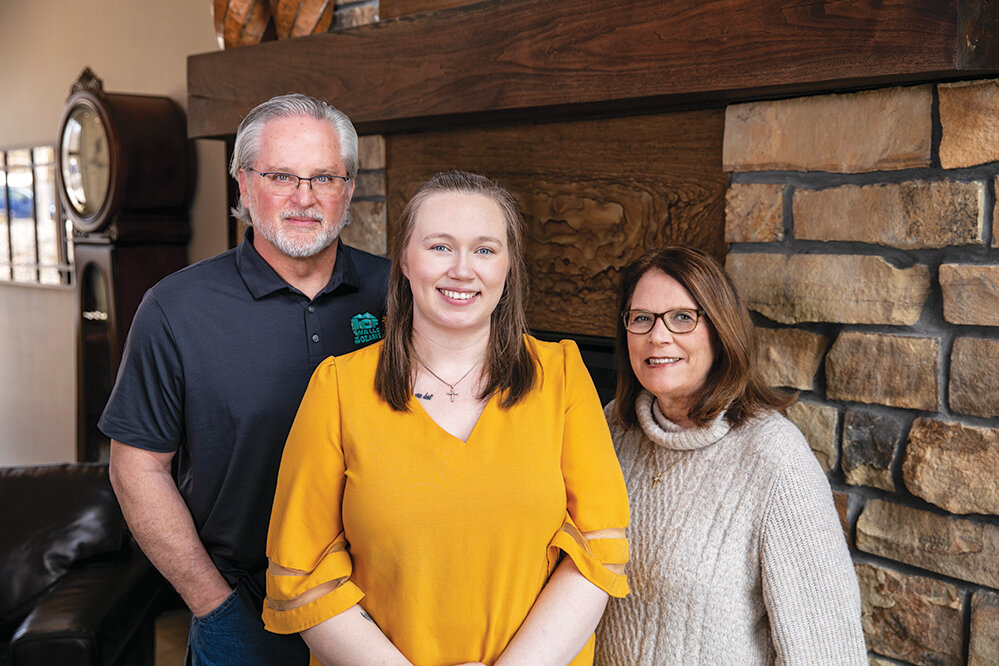YOUR BUSINESS AUTHORITY
Springfield, MO
YOUR BUSINESS AUTHORITY
Springfield, MO

In the realm of construction, innovation often emerges from necessity. During his 24-year tenure as a general contractor building traditionally constructed houses, David Samples got a request from a potential customer that took him on a journey of profound discovery: the power and potential of Insulated Concrete Form (ICF) walls. “I wasn’t sold on ICF at first,” Samples admitted. But that client’s insistence challenged his preconceptions. “Afterward we knew we could no longer build regular wood-framed houses when a far superior method was available with very little cost difference,” said Samples. Since that initial project, Samples founded ICF Walls of the Ozarks and the company has completed numerous projects ranging from 1,750 square feet to 16,000 square feet.
Fast forward nine years, and his commitment to ICF stands unyielding. “We will never build another stick-built house again,” he affirmed, highlighting the fundamental difference in construction methods. Unlike traditionally built homes, ICF structures boast 11 ¼” wide walls, 6” of 4000psi reinforced concrete sandwiched between 2 – 2 5/8” layers of expanded polystyrene, akin to giant Lego blocks. It’s a marriage of strength and insulation, engineered to withstand 250-mile-per-hour winds, equal to those of an F5 tornado.
But the appeal of ICF extends beyond sheer strength. “It’s not just about durability,” explained Samples, “it’s also about energy efficiency.” With an R-value of R50, ICF walls offer a staggering 70% improvement in energy efficiency compared to traditional walls. But going beyond the numbers, ICF Walls of the Ozarks is on a mission to redefine comfort. “You don’t feel any effects of wind or snow or anything else that’s going on,” Samples emphasized, painting a picture of serenity smack in the middle of chaos. The outside noise level is also dampened in an ICF structure.
Beyond energy savings, ICF walls are also key to a structure’s safety and security. “ICF homes are the safest, most energy-efficient, quietest houses in the world,” said Samples, citing examples of ICF structures weathering tornadoes, hurricanes, wildfires and earthquakes unscathed. ICF is also perfectly suited for the construction of safe rooms and panic rooms, whether in homes being constructed from the ground up with ICF or in the form of additions or renovations to traditionally built homes that already exist. “It’s a seamless integration of ICF technology into existing homes,” said Samples, noting that they are able to match the exterior design of an existing home. “You can’t even tell the difference from the outside.”
Looking to the future, Samples sees a paradigm shift in construction standards. “ICF or ICF-type buildings are going to be required to meet code,” he predicted, pointing to municipalities in Canada mandating ICF for new constructions due to its unparalleled energy efficiency. As climate-related disasters escalate, the demand for resilient structures is going to increase, an evolution Samples said ICF stands poised to lead.
“In the end, it’s not just about building houses, it’s about building futures.” And Samples stressed that with ICF Walls of the Ozarks, the blueprint for a secure tomorrow is within reach, one solid wall at a time. “It’s about building something that lasts, something that withstands the worst of what nature throws at us,” declared Samples, reflecting on his transformative encounter with ICF technology.
The owners of a Springfield catering business launched a new venture; indoor golfing venue franchise X-Golf Springfield swung into the Queen City; and CoxHealth Branson Hills opened.